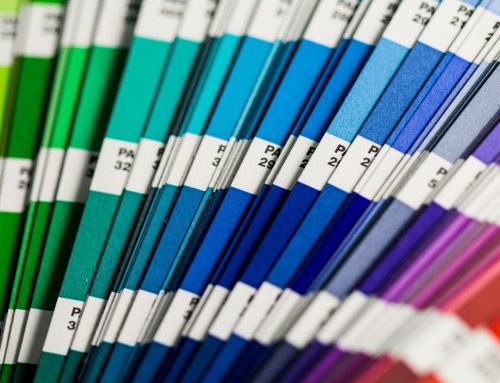What is Sandblasting?
At Vivid Powder Coating Ballina, sandblasting is one of the preliminary steps taken to prepare surfaces in our industrial powder coating services. Sand blasting or abrasive blasting is the process in which tiny abrasive particles are propelled against a surface under high pressure. The process is utilized to either smooth out or roughen up a surface, to remove oxidation, rust or old paint or to reshape a surface, acting like a cutting tool. Most of us are familiar with what sandpaper is and how it works; sharp micro particles of minerals like aluminium oxide or garnet are adhered to a backing paper and as the paper is pushed along a surface it creates tiny shavings that will eventually erode the surface so much that it becomes smooth to the touch. A very similar principle applies to sandblasting though this process is highly pressurized, much faster and provides a superior finish.
How does sand blasting work?
Firstly, you cannot use regular sand from the beach in sandblasting. Abrasives that contain more than 1% silica are prohibited as they are directly linked to the harmful and potentially fatal condition known as Silicosis, the scaring and hardening of the lungs. Due to the heavy risks involved, sandblasting should be left to the professionals. While some types of sand (white silica) are used, you can also use materials such as aluminium oxide, garnet, micro plastics, crushed glass and crushed walnut or macadamia shell. Which material you choose will be largely based on the desired outcome and finish of the job at hand.
Your chosen sand will be poured into a sandblasting machine which is connected to an air compressor that will propel the particles through a handheld nozzle at a pressure of 50 – 130 PSI. The abrasive properties of the sand will create a smoother finish as they are blasted across the surface of your project.
There are essentially two types of sandblasting, Wet and Dry. As the name suggests wet sandblasting includes the addition of water and occasionally solvent to the abrasive material whereas dry sandblasting is just the abrasive material and air.
Firstly, you cannot use regular sand from the beach in sandblasting. Abrasives that contain more than 1% silica are prohibited as they are directly linked to the harmful and potentially fatal condition known as Silicosis, the scaring and hardening of the lungs. Due to the heavy risks involved, sandblasting should be left to the professionals. While some types of sand (white silica) are used, you can also use materials such as aluminium oxide, garnet, micro plastics, crushed glass and crushed walnut or macadamia shell. Which material you choose will be largely based on the desired outcome and finish of the job at hand.
Your chosen sand will be poured into a sandblasting machine which is connected to an air compressor that will propel the particles through a handheld nozzle at a pressure of 50 – 130 PSI. The abrasive properties of the sand will create a smoother finish as they are blasted across the surface of your project.
There are essentially two types of sandblasting, Wet and Dry. As the name suggests wet sandblasting includes the addition of water and occasionally solvent to the abrasive material whereas dry sandblasting is just the abrasive material and air.
What is sandblasting used for?
Cleaning/ Preparation
One of the primary reasons people turn to sandblasting is to remove grease, grime, rust or old paint from a surface. Wet sandblasting or wet blasting is a superior alternative to regular pressure washing, particularly on concrete surfaces such as driveways, streets and footpaths. It works at removing dirt and grease that may be hazardous by propelling hot water, solvent and abrasive material all at once. The solvent will aid the breakdown of the grease while the water blows it away and the abrasive material works at removing a fine layer of the surface, leaving it nice and smooth. Dry sandblasting can also be implemented as a quick and less labor-intensive alternative to scrubbing and provides a cleaning method where water wastage may be an issue you’d like to avoid. Sandblasting can be used to clean the exterior of cars, houses and machines but also small tools and smaller parts of machinery and automobiles that may become clogged. Sandblasting is a critical step in the powder coating process as it thoroughly prepares the surface by removing old contaminate like paint or corrosion and imperfections like scratches to allow for the most refined finish possible.
Mold Remediation
Sandblasting can now be utilized to combat mold throughout the interior and exterior of buildings. It is particularly useful in hard-to-reach places such as roof cavities and crawl spaces and produces far less damage and mess than traditional methods.
Restoration
Sandblasting allows for surfaces such as metal, brick, concrete and stucco to be cleaned and returned to their former glory. By resurfacing and removing damaged outer layers, whatever surface you are working on can then be resealed to add to its longevity.
Carving
Sandblasting can be adopted for more than just utilitarian purposed. Beyond the cleaning and restoration capabilities, sandblasting is in essence a method of cutting through hard surfaces like metal and concrete. For this reason, sandblasting can be used as a way to etch signs or carve sculptures.
The advantages and disadvantages of sandblasting?
Advantages
- Sandblasting is a quick process where most jobs can be completed by one person, drastically reducing labor costs.
- Given that silica is not always used it can be much safer than many hazardous cleaning products.
- Works efficiently on hard and rough surfaces such as metal and concrete with less waste and provides the most well-polished finish available.
Disadvantages
- Inversely, sandblasting can be incredibly dangerous due to the release of silica, as previously mentioned. Due to the nature of sandblasting, the projection of abrasives at high pressure can produce levels of heat that may be harmful to the intended surface and health of the individual Therefore, sandblasting should always be performed by professionals in appropriate protective gear who have knowledge of correct post work cleaning methods.
- Sandblasting is not fit for every surface due to the abrasive materials used and each particular project will require a specific grade of material, level of pressure and unique preparation.




